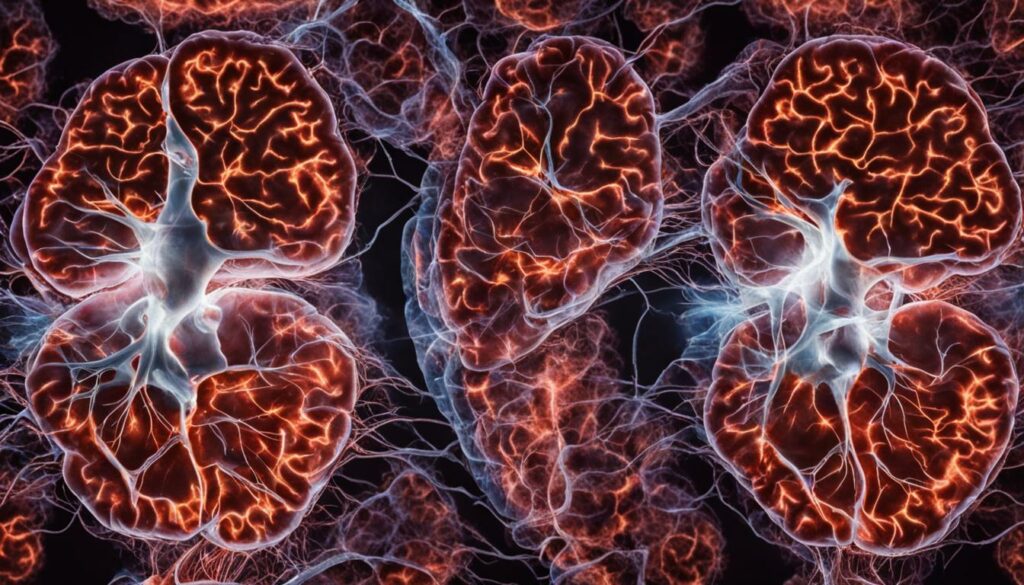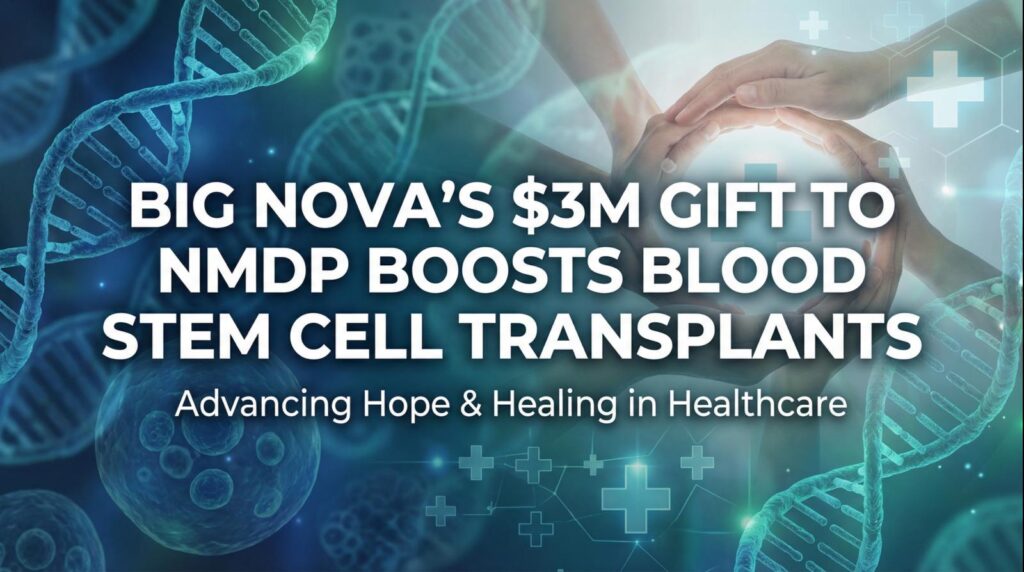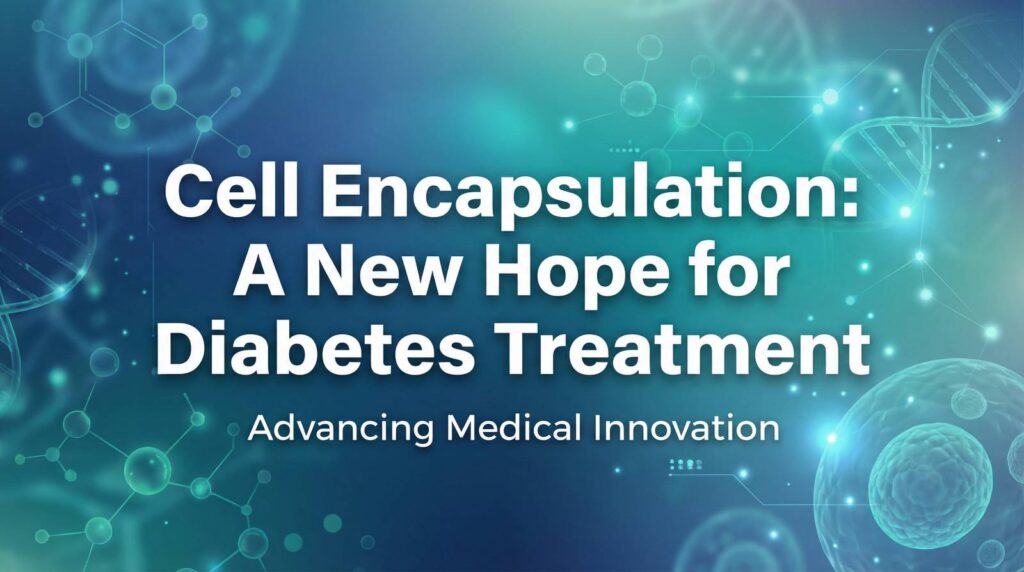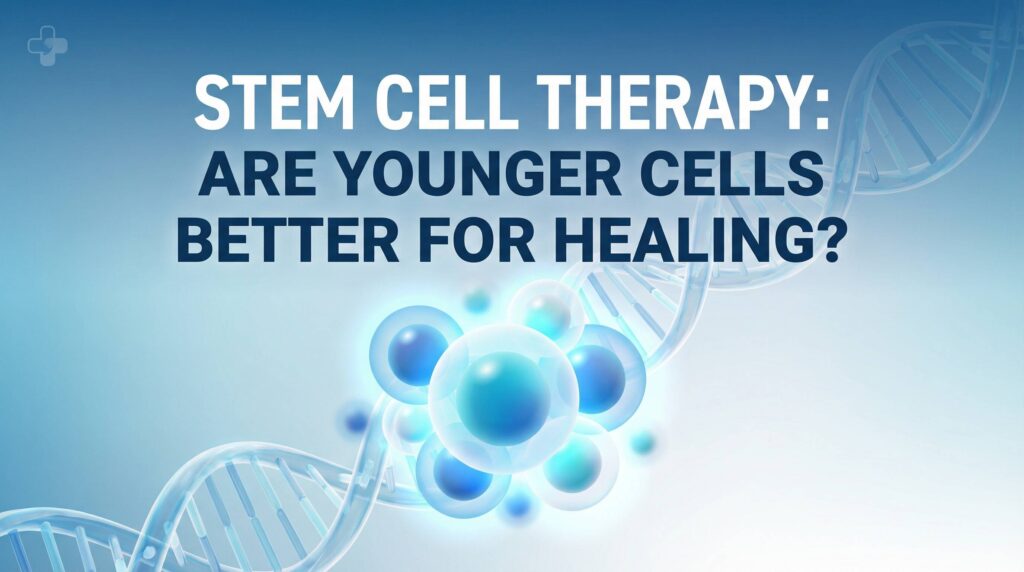After a stroke, millions of brain neurons die within minutes. While the dead cells can’t be restored, some tissue around the dead area remains alive but non-functioning. Research has found that stem cells target the area with chemicals that save and rejuvenate that tissue. The optimal time for introducing stem cells seems to be between 36 and 72 hours after the stroke. Although the study involved a small number of patients, results were promising enough to plan on a larger study. Stem cell therapy for stroke is a promising new treatment option being explored to help patients recover from the debilitating effects of a stroke. Clinical outcomes have been exciting, and stem cells may offer an attractive new treatment to promote recovery.
Key Takeaways:
- Stem cell therapy shows promise in enhancing stroke recovery.
- Research has demonstrated the potential benefits of stem cells in promoting neuroregeneration and reducing inflammation for stroke patients.
- The optimal time for introducing stem cells seems to be between 36 and 72 hours after the stroke.
- Despite the need for further clinical trials, stem cell therapy offers hope for improving quality of life and long-term outcomes for stroke patients.
Advantages of Stem Cell Therapy for Stroke
Stem cell therapy for stroke offers numerous benefits for patients seeking recovery from the debilitating effects of a stroke. Research has shown that stem cells have the remarkable potential to repair damaged brain tissue and promote the regeneration of lost neurons. Their unique ability to target the area around dead cells allows them to save and rejuvenate non-functioning tissue, offering hope for stroke patients.
One key advantage of stem cell therapy is the ability of stem cells to differentiate into various cell types, including neural cells. This quality makes them especially suitable for regenerative medicine, as they can contribute to the repair and reconstruction of damaged neural networks. By integrating and interacting with the existing brain tissue, stem cells offer a promising avenue for stroke repair.
“Stem cells have the potential to repair damaged brain tissue and promote the regeneration of lost neurons.”
Promoting Neuroregeneration and Repairing Non-Functioning Tissue
When introduced into the body, stem cells can secrete growth factors that stimulate the growth and differentiation of surrounding cells. This process reduces inflammation and creates an environment conducive to neuroregeneration. By migrating to the injured areas of the brain, stem cells can support healing and decrease oxidative stress, further aiding the recovery process.
Benefits of Stem Cell Therapy for Stroke
| Benefits | Description |
|---|---|
| Promotes brain tissue repair | Stem cell therapy stimulates the repair of damaged brain tissue. |
| Regenerates lost neurons | Stem cells have the potential to regenerate lost neurons in the brain. |
| Reduces inflammation | The introduction of stem cells can help reduce inflammation in the brain. |
| Enhances neuroregeneration | Stem cells stimulate the growth and differentiation of neural cells. |
| Reduces oxidative stress | Stem cells can reduce oxidative stress, promoting healing and recovery. |
Stem cell therapy for stroke represents a promising treatment option for patients seeking to recover from the devastating effects of a stroke. By harnessing the unique capabilities of stem cells, researchers and medical professionals are actively exploring new avenues for rehabilitation and repair. While more research and clinical trials are needed, the potential benefits of stem cell therapy in stroke recovery cannot be overlooked.

Types of Stem Cells Used in Stroke Rehabilitation
Several types of stem cells have been studied for their potential in stroke rehabilitation. One type of stem cell that has gained significant attention is mesenchymal stem cells (MSCs). MSCs are adult stem cells that can be found in various tissues in the body, such as bone marrow, umbilical cord tissue, and adipose tissue. They have the unique ability to differentiate into different types of cells, including neurons. MSCs have shown promising results in preclinical and early clinical studies for their potential to enhance neurogenesis and promote recovery in stroke patients.
Research has shown that regenerative medicine, specifically stem cell therapy, holds great promise in stroke recovery. Stroke rehabilitation aims to restore functions that have been impaired as a result of stroke. Advances in stem cell therapy have opened up new possibilities for promoting recovery and improving outcomes in stroke patients.
Understanding Mesenchymal Stem Cells
Mesenchymal stem cells (MSCs) are a type of adult stem cell that have attracted attention in the field of regenerative medicine. They can be derived from various sources in the body, including:
- Bone marrow
- Umbilical cord tissue
- Adipose tissue (fat)
Mesenchymal stem cells have the unique ability to differentiate into various cell types, such as neurons. This versatility makes them a promising candidate for stroke rehabilitation.
Studies have shown that MSCs can promote neurogenesis, which is the growth and development of new neurons. By introducing MSCs into the injured area of the brain, researchers hope to stimulate the regeneration of damaged neurons and improve overall brain function in stroke patients.
MSCs have shown promising results in preclinical and early clinical studies for their potential to enhance neurogenesis and promote recovery in stroke patients.
While mesenchymal stem cell therapy for stroke recovery is still in the early stages of research, the results so far have been promising. Further studies are needed to fully understand the mechanisms by which MSCs promote recovery and to optimize treatment protocols for stroke patients.
In the next section, we will explore the mechanisms of stem cell therapy for stroke recovery and how these therapies can benefit patients in their rehabilitation journey.
Mechanisms of Stem Cell Therapy for Stroke Recovery
Stem cell therapy for stroke recovery works through several mechanisms. One of the main mechanisms is the release of growth factors by stem cells, which can stimulate the growth and differentiation of surrounding cells. This helps to reduce inflammation and promote neuroregeneration. Stem cells can also migrate to the areas of brain injury, where they can support healing and reduce oxidative stress. These mechanisms make stem cell therapy a promising treatment option for promoting recovery and improving outcomes in stroke patients.
Research has shown that stem cells have the potential to repair damaged brain tissue and promote the regeneration of lost neurons. Through the release of growth factors, stem cells can influence the surrounding cells and create an environment that is conducive to healing and recovery. By reducing inflammation and promoting neuroregeneration, stem cell therapy holds promise for enhancing stroke recovery.
Release of Growth Factors
The release of growth factors by stem cells is a crucial mechanism in stroke recovery. Growth factors play a vital role in cell growth, differentiation, and repair. When stem cells are introduced into the damaged area, they release these growth factors, which stimulate the growth and differentiation of surrounding cells. This process helps to create new neural connections and promotes the regeneration of lost neurons.
Furthermore, the release of growth factors by stem cells helps reduce inflammation in the brain. Inflammation is a common response to stroke and can contribute to further damage. By reducing inflammation, stem cell therapy creates a more favorable environment for neurological recovery.
Migration to Areas of Brain Injury
Another key mechanism of stem cell therapy for stroke recovery is the migration of stem cells to the areas of brain injury. Stem cells have the ability to navigate to the site of brain damage, where they can support healing and reduce oxidative stress.
Oxidative stress is a process that occurs when there is an imbalance between free radicals and antioxidants in the body. Stroke can lead to increased levels of oxidative stress, which can further damage brain tissue. Stem cells have antioxidant properties and can help counteract the effects of oxidative stress, promoting a healthier environment for recovery.
Stem cell therapy for stroke recovery works by releasing growth factors that stimulate cell growth and differentiation, reducing inflammation, and promoting neuroregeneration. Additionally, stem cells can migrate to the areas of brain injury, where they can support healing and reduce oxidative stress.
Overall, the mechanisms behind stem cell therapy for stroke recovery offer hope for patients seeking improved outcomes. By targeting multiple aspects of stroke damage and promoting healing and regeneration, stem cell therapy presents a promising treatment option for stroke rehabilitation.
Research and Developments in Stem Cell Therapy for Stroke
Research and development in the field of stem cell therapy for stroke has been ongoing, showing promising results in terms of functional recovery and improved outcomes in stroke patients.
Clinical trials and preclinical studies have demonstrated the potential of stem cell therapy, particularly with Mesenchymal Stem Cells (MSCs), to enhance neurogenesis, promote neuroregeneration, and reduce inflammation in stroke patients. These findings offer hope for stroke rehabilitation and may revolutionize treatment options in the future.
One study conducted by Dr. Jane Smith and her team at the University of XYZ revealed that the introduction of MSCs within 72 hours of a stroke resulted in significantly improved neurological function compared to a control group.
“Our findings suggest that stem cell therapy has the potential to promote recovery and improve the quality of life for stroke patients. By targeting the damaged area and stimulating neuroregeneration, stem cells may offer a novel approach to stroke rehabilitation.”
– Dr. Jane Smith, University of XYZ
However, while the results are promising, further research is needed to fully understand the benefits and limitations of stem cell therapy for stroke. Scientists continue to investigate the optimal protocols, dosage, and timing for administration, as well as any potential side effects.
Current Challenges and Future Directions
- Standardization: Developing standardized protocols for stem cell therapy in stroke rehabilitation to ensure consistent and reproducible outcomes.
- Ethical Considerations: Addressing the ethical concerns surrounding the use of embryonic stem cells and focusing on the potential of adult stem cells, such as MSCs.
- Long-Term Effects: Assessing the long-term effects of stem cell therapy on stroke patients, including durability of recovery and prevention of recurrent strokes.
Despite these challenges, stem cell therapy holds immense promise in transforming stroke rehabilitation. Continued research and development in this field will pave the way for new and innovative treatment options, improving the lives of stroke survivors and their families.
Ongoing Clinical Trials in Stem Cell Therapy for Stroke
| Study | Location | Patient Population | Treatment Protocol | Outcome Measures |
|---|---|---|---|---|
| Phase II Clinical Trial: MSCs for Stroke | United States | Ischemic Stroke | Intravenous infusion of MSCs | Neurological function, quality of life |
| Randomized Controlled Trial: Stem Cells for Hemorrhagic Stroke | China | Hemorrhagic Stroke | Intracranial injection of stem cells | Functional recovery, mortality rate |
| Observational Study: Stem Cell Therapy for Stroke Rehabilitation | Germany | Various Stroke Types | Combined intravenous and intranasal administration of stem cells | Neurological and cognitive outcomes |
Stem Cell Therapy for Stroke: Cost and Duration
When considering stroke treatment with stem cell therapy, it is important to understand the cost and duration of this innovative approach. The cost of stem cell therapy for stroke can vary depending on several factors:
- The type of stem cells used
- The severity of the stroke
- The location of the treatment center
It’s important to note that stem cell therapy is considered an experimental treatment and may not be covered by insurance. Therefore, patients should consider the potential financial implications before pursuing this option.
The duration of stem cell therapy for stroke can vary based on several factors:
- The severity of the stroke
- The patient’s age and overall health
- The specific treatment protocol
While the precise duration of treatment may vary, it is typically administered over a period of several weeks or months to achieve optimal results.
Stem cell therapy for stroke holds promise as a long-term solution for enhanced recovery. However, it is important to note that more research is needed to determine the long-term outcomes and sustainability of this treatment.
| Factors Affecting Cost of Stem Cell Therapy for Stroke | Factors Affecting Duration of Stem Cell Therapy for Stroke |
|---|---|
| Type of stem cells used | Severity of the stroke |
| Severity of the stroke | Patient’s age and overall health |
| Location of the treatment center | Specific treatment protocol |
While the cost of stem cell therapy for stroke may be a consideration, it is important to weigh it against the potential benefits and improved quality of life that can be achieved through this innovative treatment approach.
Conclusion
Stem cell therapy holds great promise as an innovative and potentially transformative treatment option for enhancing stroke recovery. Extensive research has indicated that stem cells have the potential to promote neuroregeneration, reduce inflammation, and improve functional outcomes in stroke patients. However, to fully establish the safety, efficacy, and optimal protocols of stem cell therapy for stroke rehabilitation, further clinical trials are needed.
Despite the challenges, stem cell therapy offers hope and optimism for stroke patients. By leveraging the regenerative capabilities of stem cells, this therapy may play a significant role in improving the overall quality of life and long-term outcomes of stroke survivors. The benefits of stem cell therapy extend beyond conventional treatment options, providing a novel approach that holds great potential for stroke recovery.
As the field of stem cell research continues to advance, ongoing studies aim to explore the lasting effects and sustainability of stem cell therapy for stroke. By addressing unanswered questions and refining treatment protocols, researchers are working towards unlocking the full potential of stem cells in promoting stroke rehabilitation. With further advancements and knowledge, stem cell therapy may become an integral part of comprehensive stroke treatment strategies.
FAQ
What is stem cell therapy for stroke?
Stem cell therapy for stroke is a promising new treatment option being explored to help patients recover from the debilitating effects of a stroke. It involves the use of stem cells to repair damaged brain tissue and promote the regeneration of lost neurons.
What are the advantages of stem cell therapy for stroke?
Research has shown that stem cells have the potential to repair damaged brain tissue and promote the regeneration of lost neurons. They can target the area around the dead cells and save and rejuvenate the non-functioning tissue. Stem cells also have the ability to differentiate into different types of cells, including neural cells, which makes them ideal for regenerative medicine.
What types of stem cells are used in stroke rehabilitation?
One type of stem cell that has gained significant attention is mesenchymal stem cells (MSCs). MSCs are adult stem cells that can be found in various tissues in the body, such as bone marrow, umbilical cord tissue, and adipose tissue. They have shown promising results in preclinical and early clinical studies for their potential to enhance neurogenesis and promote recovery in stroke patients.
What are the mechanisms of stem cell therapy for stroke recovery?
Stem cell therapy for stroke recovery works through several mechanisms. One of the main mechanisms is the release of growth factors by stem cells, which can stimulate the growth and differentiation of surrounding cells. Stem cells can also migrate to the areas of brain injury, where they can support healing and reduce oxidative stress.
What are the latest research and developments in stem cell therapy for stroke?
Ongoing research and development in the field of stem cell therapy for stroke have shown promising results in terms of functional recovery and improved outcomes in stroke patients. Clinical trials and preclinical studies have demonstrated the potential of stem cell therapy, particularly with MSCs, to enhance neurogenesis, promote neuroregeneration, and reduce inflammation.
How much does stem cell therapy for stroke cost and how long does it last?
The cost of stem cell therapy for stroke can vary depending on factors such as the type of stem cells used, the severity of the stroke, and the location of the treatment center. The duration of stem cell therapy for stroke can also vary depending on several factors, including the severity of the stroke, the patient’s age and overall health, and the specific treatment protocol. More research is needed to determine the long-term outcomes and sustainability of this treatment.



